We kicked off our time in Nevada – the 49th state of our 50 state road trip – with a week in Ely. Well, I say “we”, but Shae was overseas in South Africa leading her first trip of Ignite Travel, so it was just me and our dog Truffles.
Ely is a small city on the eastern side of the state which doesn’t have a ton of attractions nearby. Despite that, I’d wanted to stay there as there were a few places of interest, one of which was Ward Charcoal Ovens State Historic Park. A reader had suggested it (thanks Heather!), plus I’d seen it when perusing Google Maps, so one afternoon Truffles and I made the short drive there from our hotel in downtown Ely.

The site was quiet when I arrived. In fact, our car was the only one there when I pulled up, although there was a couple walking around who were presumably camping nearby.

If you want to camp on-site, it costs $15 per night for Nevada vehicles or $20 per night for those with cars from out of state. If you just want to visit for the day, it costs $5 if your vehicle has a Nevada plate (rental cars with NV plates presumably count), while out of state vehicles cost $10. The site doesn’t take credit cards, so you’ll want enough cash on you to drop in an envelope that’s provided.

There was also a container for brochures, but that was empty. It didn’t seem like that was a huge loss though as there were several information boards providing history and context of the charcoal ovens.
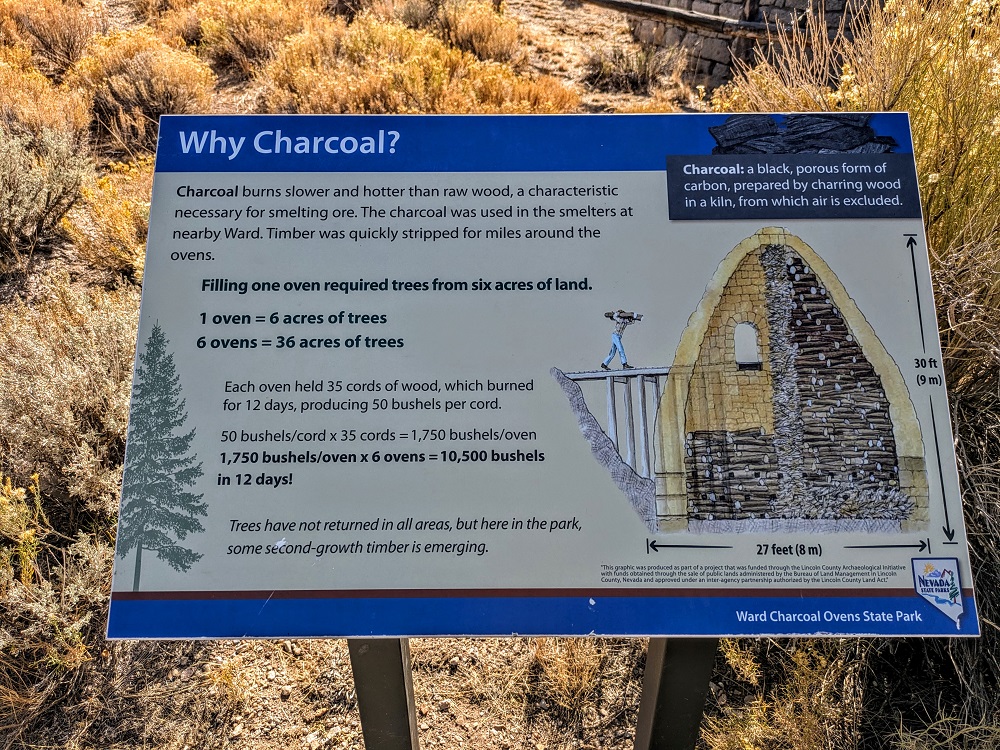
Ward Charcoal Ovens State Historic Park has a short but interesting history. The ovens were built in the mid 1870s to create, as the name of the site suggests, charcoal for the nearby town of Ward.
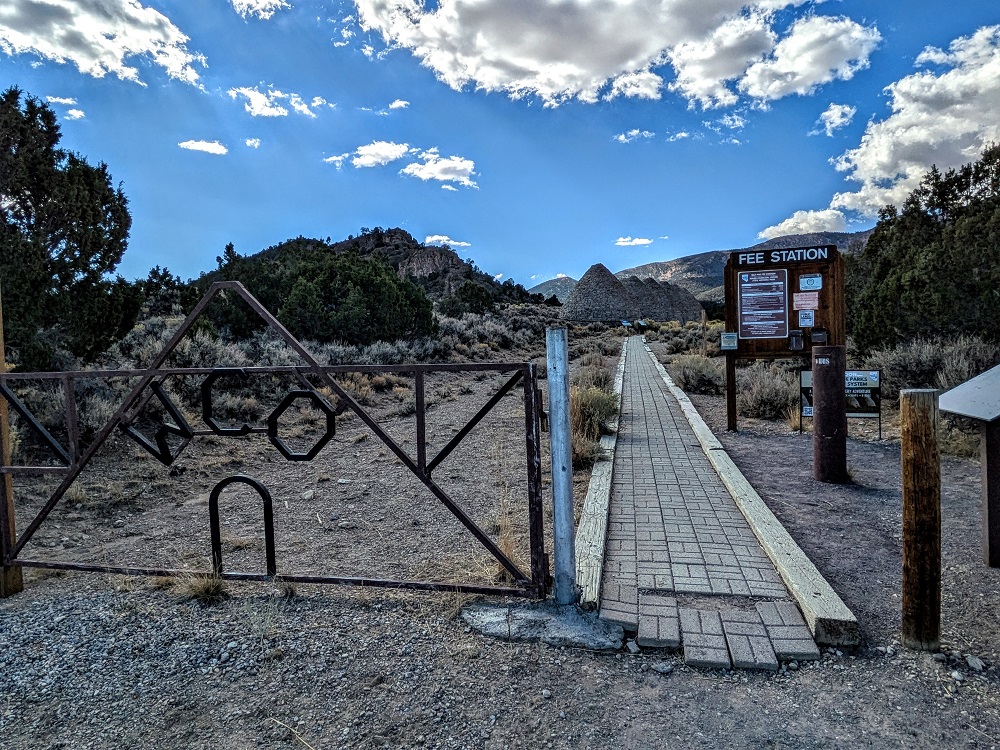
There are six ovens, each of which are 27 feet wide and 30 feet high. Each oven could take 35 cords of wood which was how many trees would cover six acres of land. Those six ovens therefore took 36 acres of trees per burning which ended up decimating the surrounding area of trees. In fact, this activity removed all the trees within a 35 mile radius, although some trees have started growing back since.
The ovens would burn for 12 days which resulted in 50 bushels of charcoal for each cord of wood. That means each oven would produce 1,750 bushels of charcoal, with all six producing 10,500 bushels between them (about 350,000 pounds).
That charcoal was then used to smelt ore in Ward. It took 30-50 bushels of charcoal to reduce one ton of ore, so each oven’s charcoal capacity could reduce 35-50 tons of ore.
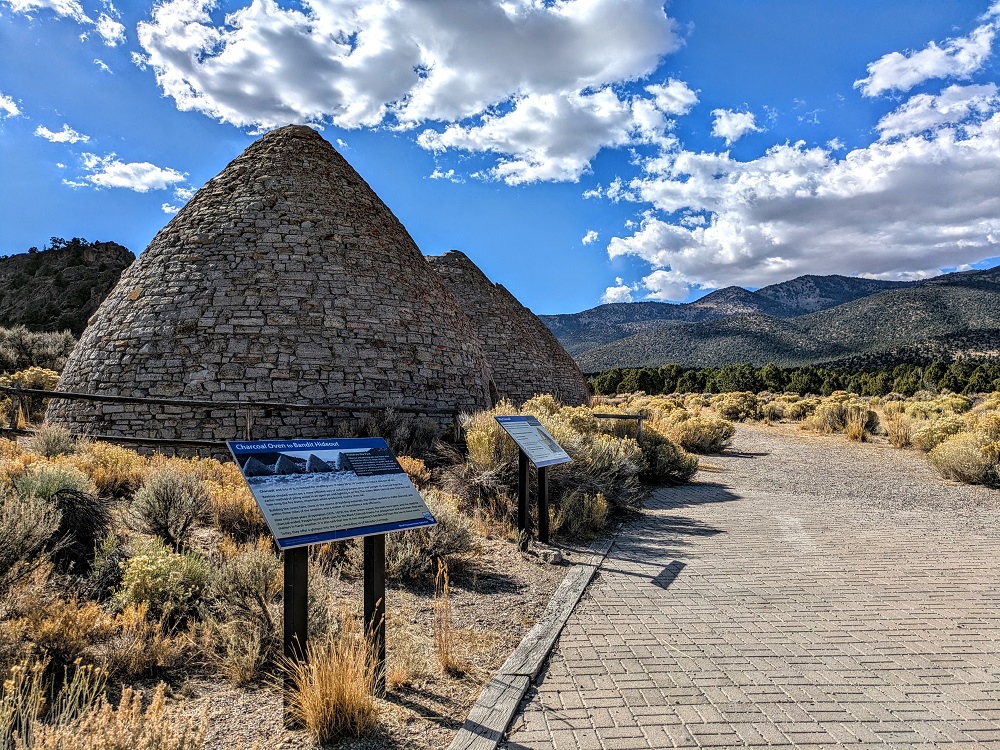
Each oven has three parallel rows of holes at the base, presumably used as vents to help ensure oxygen supply for the burning charcoal.
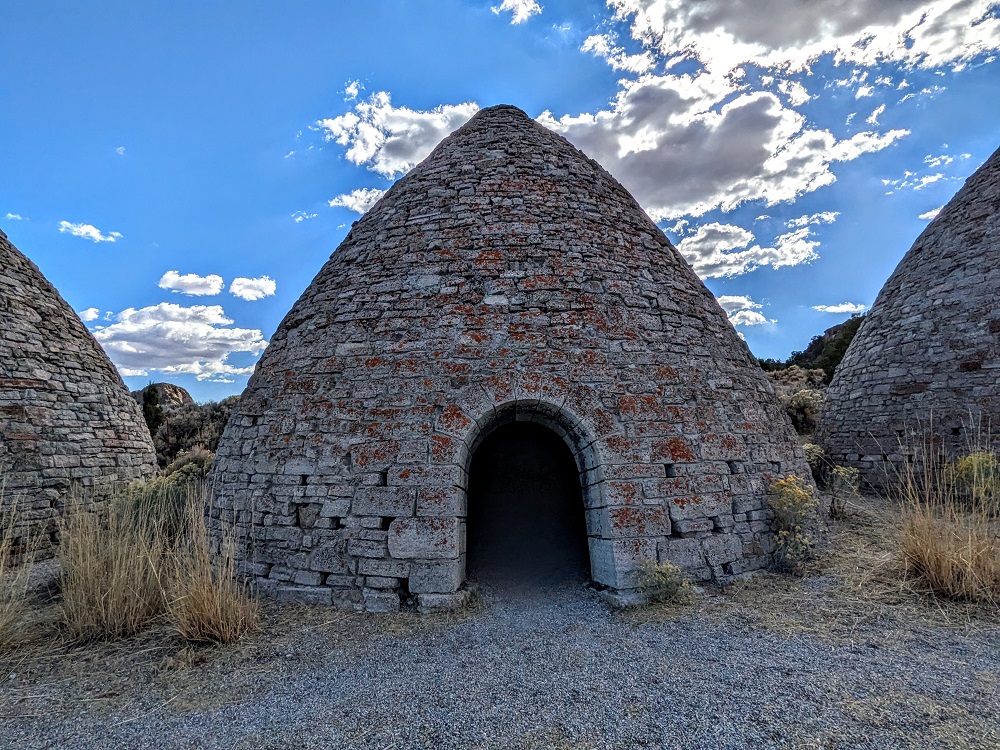

Visitors are welcome to enter the ovens. Inside you’ll find a chimney at the top and a window at the rear of the oven, about halfway up. The beehive shape of the ovens helped ensure the wood reduced to charcoal more efficiently than lighting it on fire over an open pit. The design allowed workers to adjust the heat inside, as well as determine how long it would burn for.
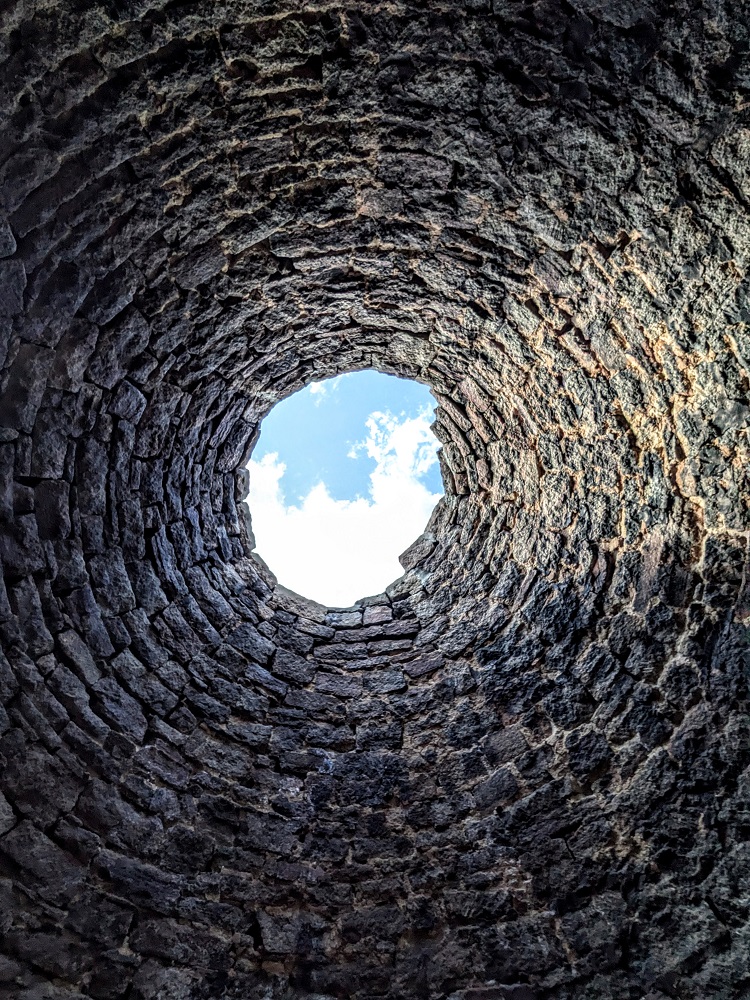
One of the most fascinating things about visiting Ward Charcoal Ovens State Historic Park was the acoustics inside the ovens. Due to the curved nature of the building, sounds echoed in an unusual way. In fact, it was less of an echo and more of an amplification. Walking around on the gravel inside the ovens was therefore significantly louder than you’d expect, like someone was crunching gravel inside your ear. It was an almost unsettling experience; not in a bad way, just that it was a sonorous experience that I’d not encountered before and so it felt bizarre.
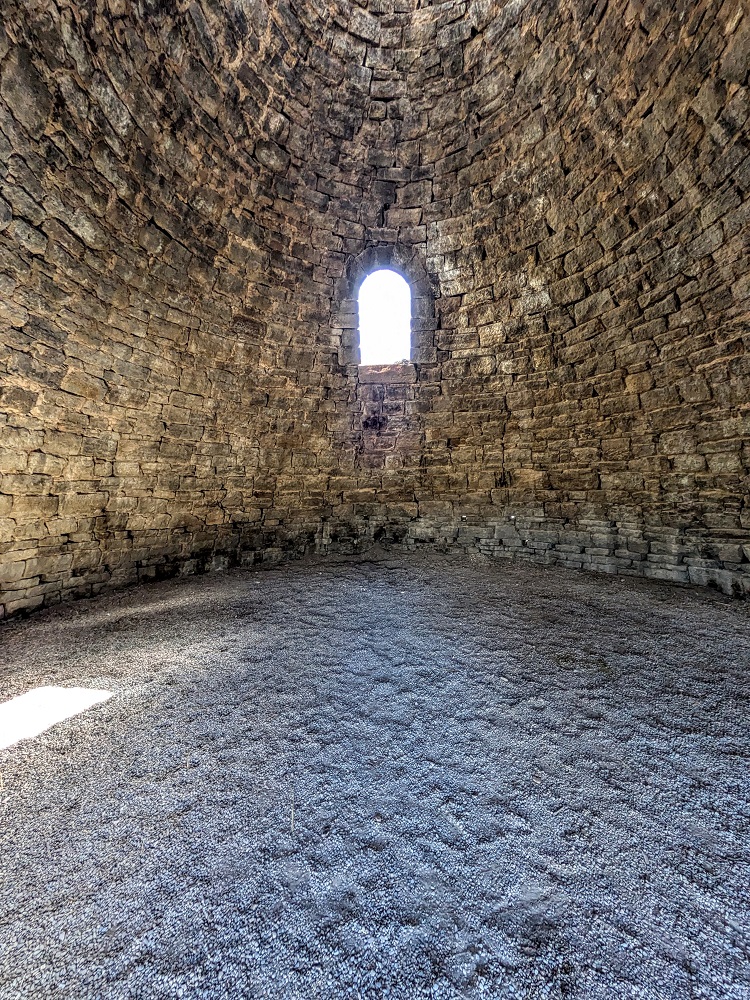
One of the nice things about Ward Charcoal Ovens is that it’s a pet-friendly site, so your pup can join you.
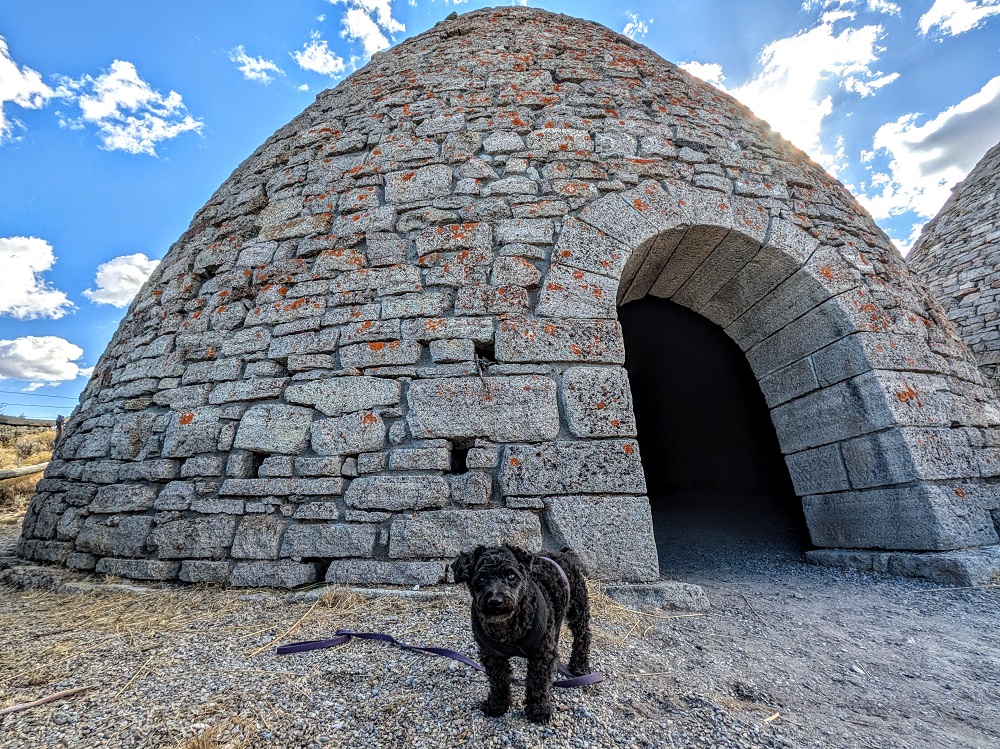

The ovens had a short shelf life in terms of how long they were actually used. They were only in operation from 1876-1879; after those three years, the silver boom lessened and the consumption of all trees in a 35 mile radius made it harder to create charcoal, especially now that demand for charcoal was lessened.
No longer used as ovens, the stone structures were sometimes used for shelter, with some stagecoach bandits said to have used them to hide from law enforcement. Considering they were ~150 years old when I visited, they were still in remarkably good condition.
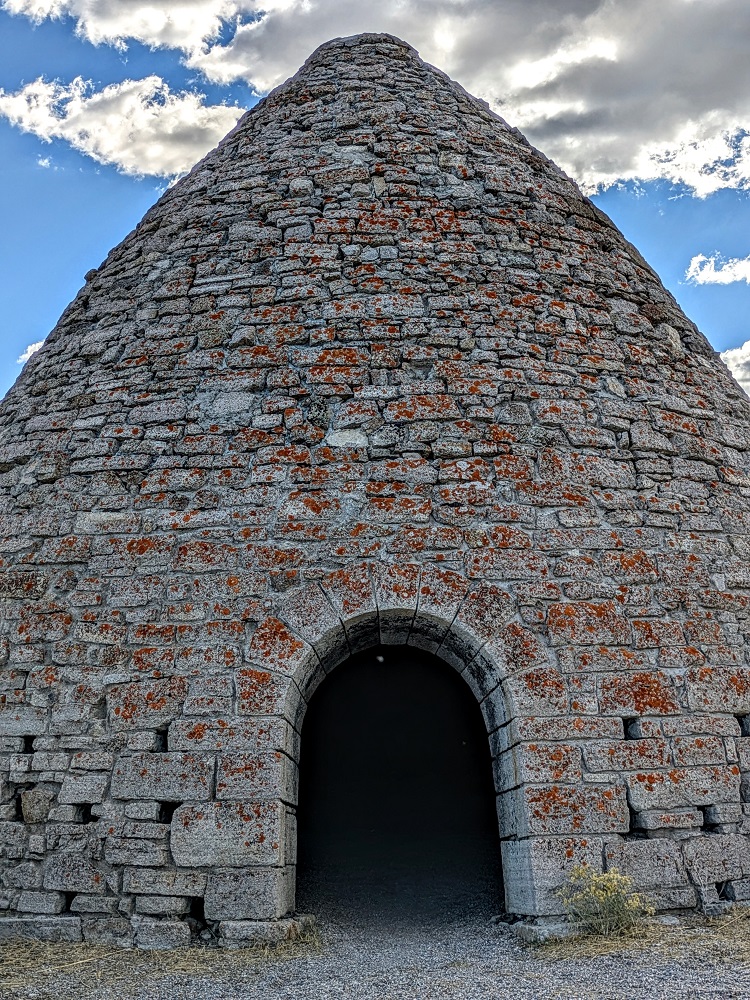
After exploring the ovens, Truffles and I took a walk on the Willow Creek Trail which starts at the end of the ovens.
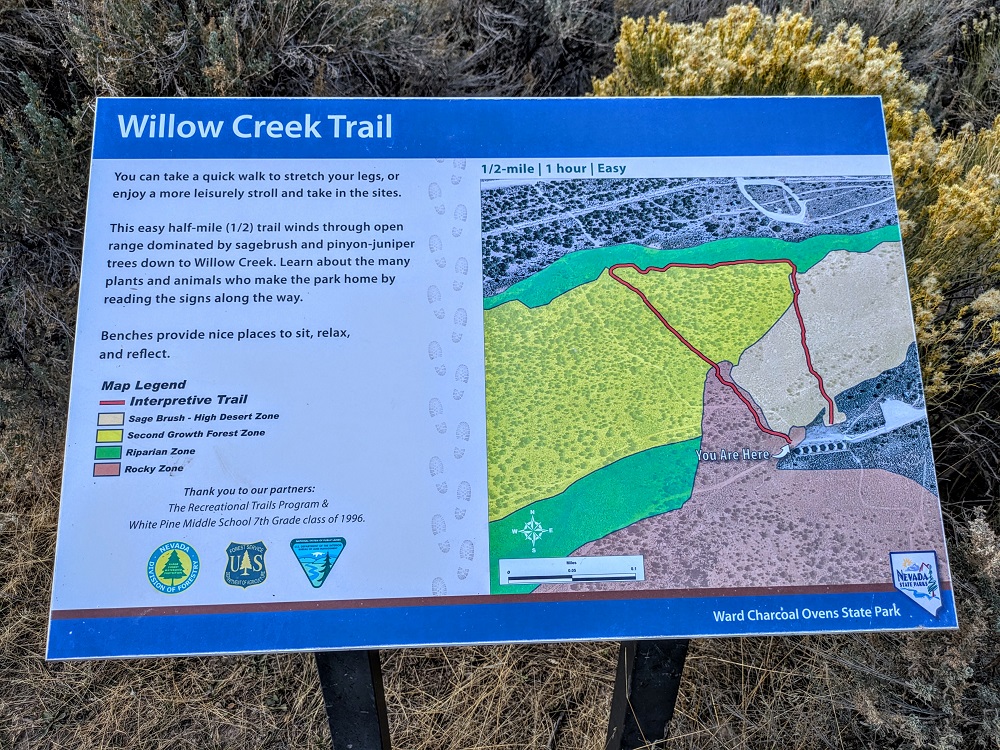
As you can see on the board above, it’s a half mile trail that’s easy to complete as there’s very little elevation change.
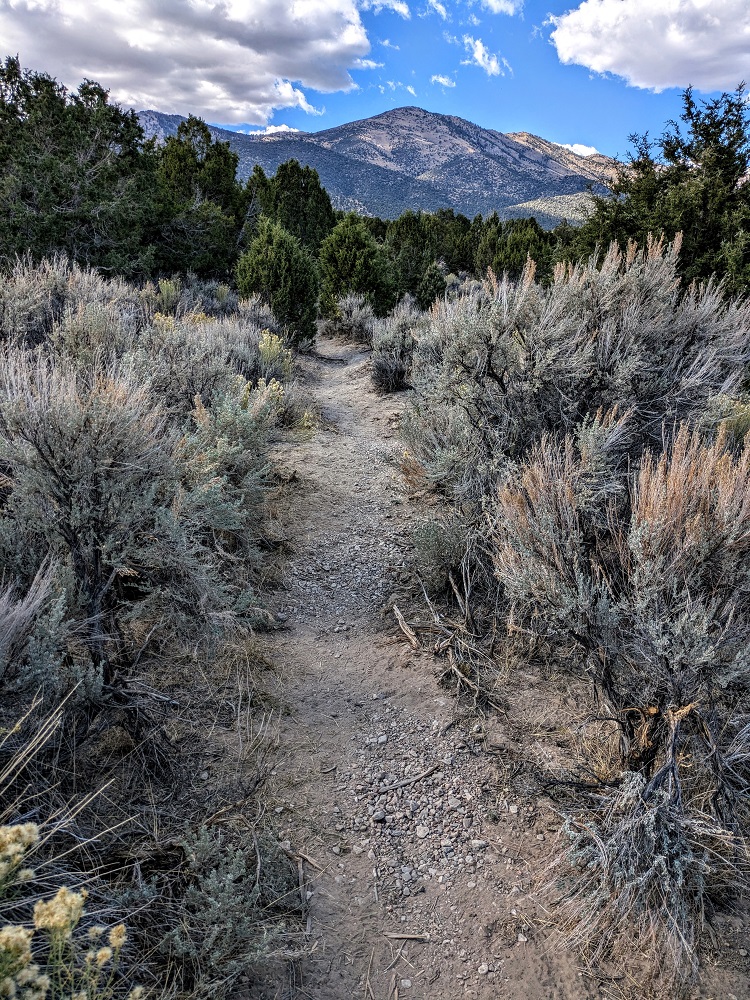
Walking along the trail enhances your visit as there’s lots more to learn along the way. For example, you can see the site of the quarry where the stone for the ovens was obtained from.

There are several other information boards along the trail providing details about local animals, birds and trees.
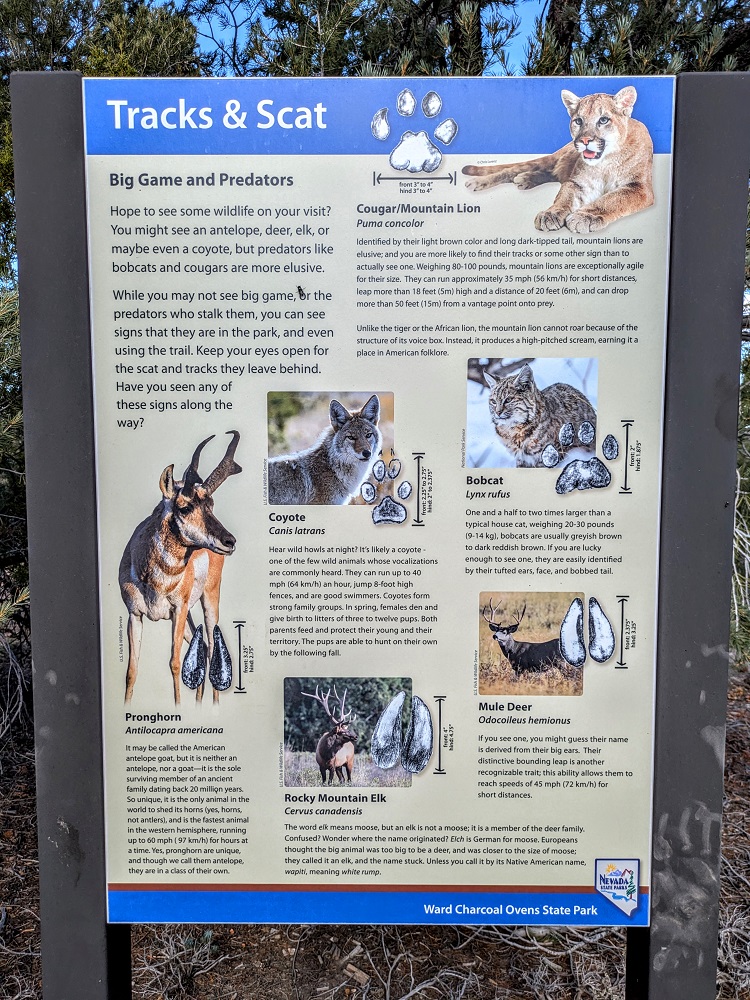
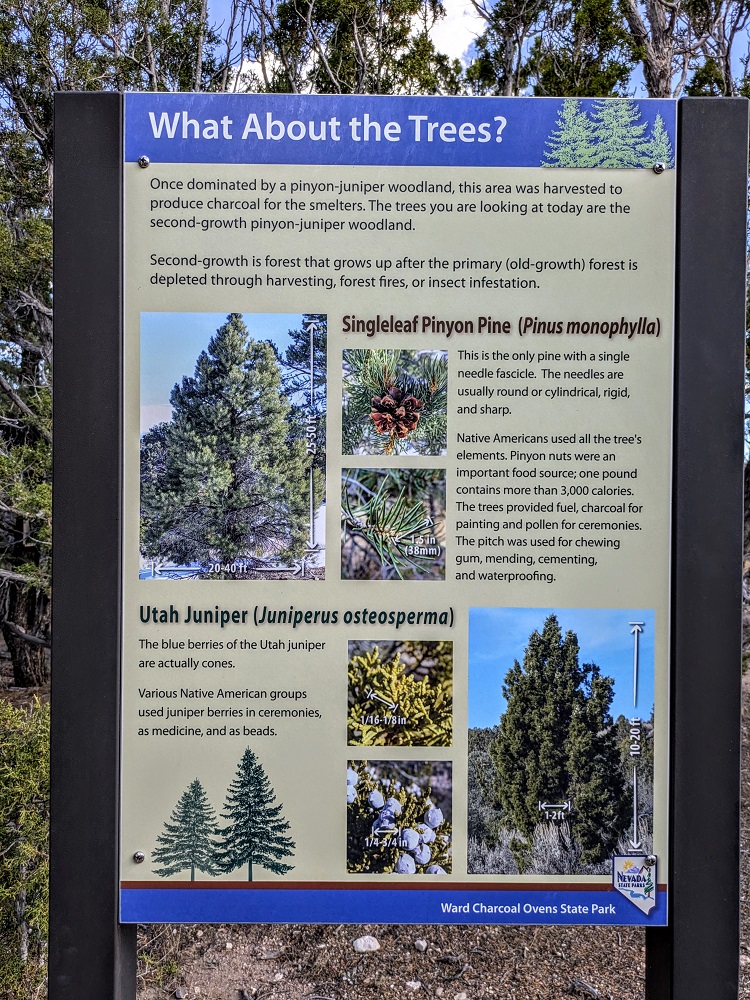

At the end of one side of the trail there were a couple of picnic tables. That area was boggy though, so we turned right to continue along the trail.
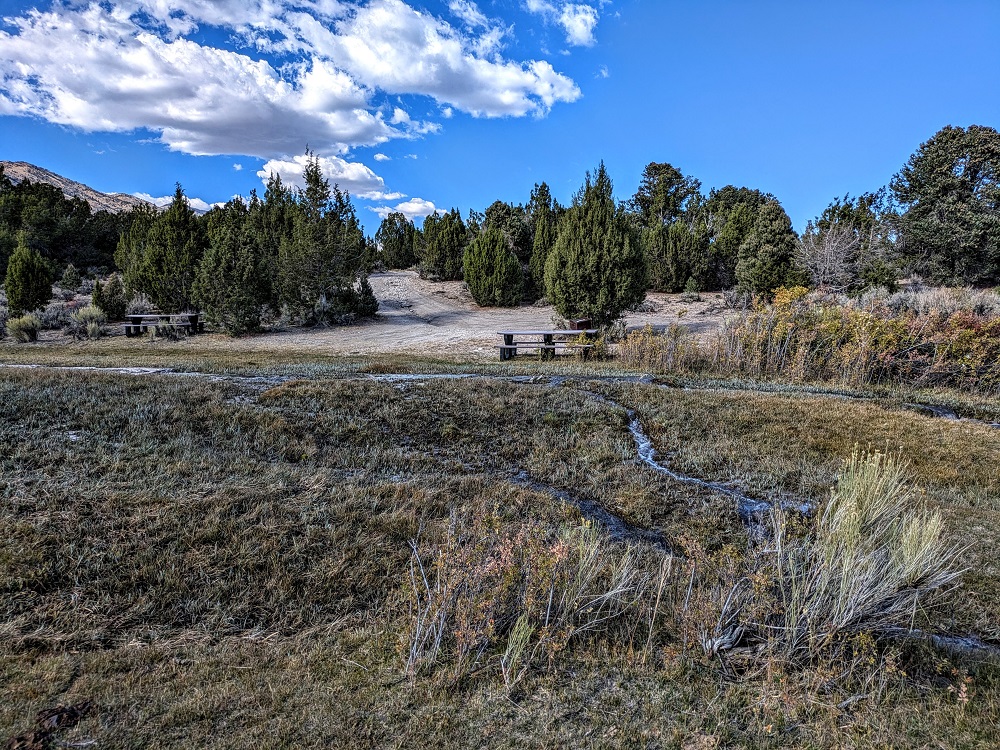
The trail followed along the creek part of the way, with there being a bridge across the creek off to the left before the final right turn back to the ovens. It was about 2pm at that point, so Truffles and I crossed over the bridge to make use of one of the picnic tables at the top of the hill.
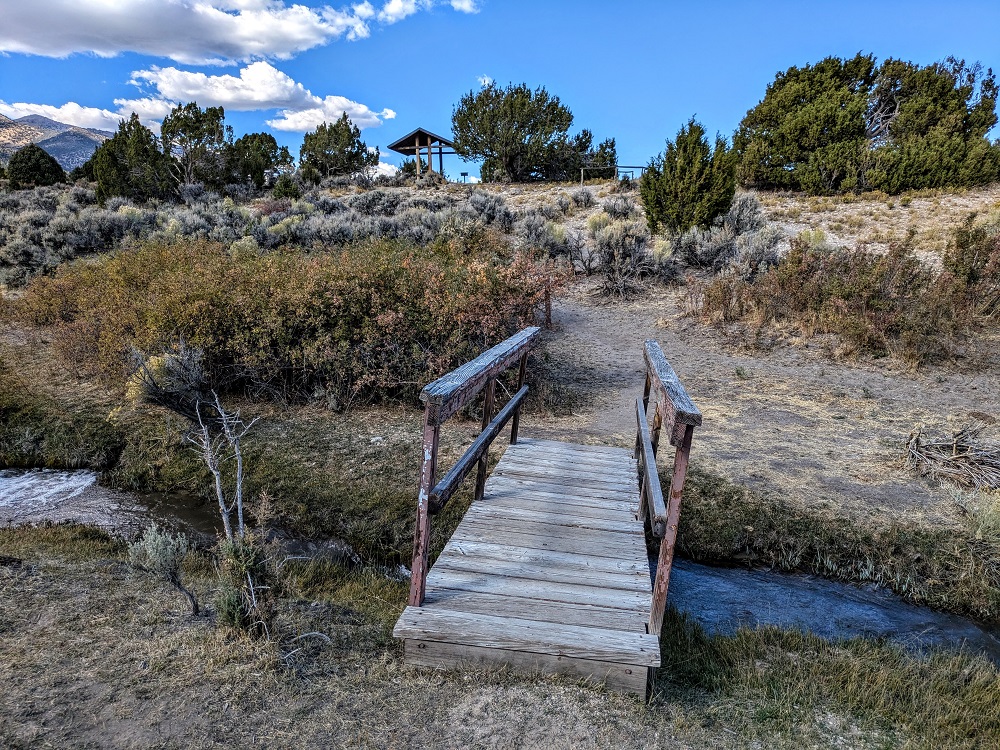

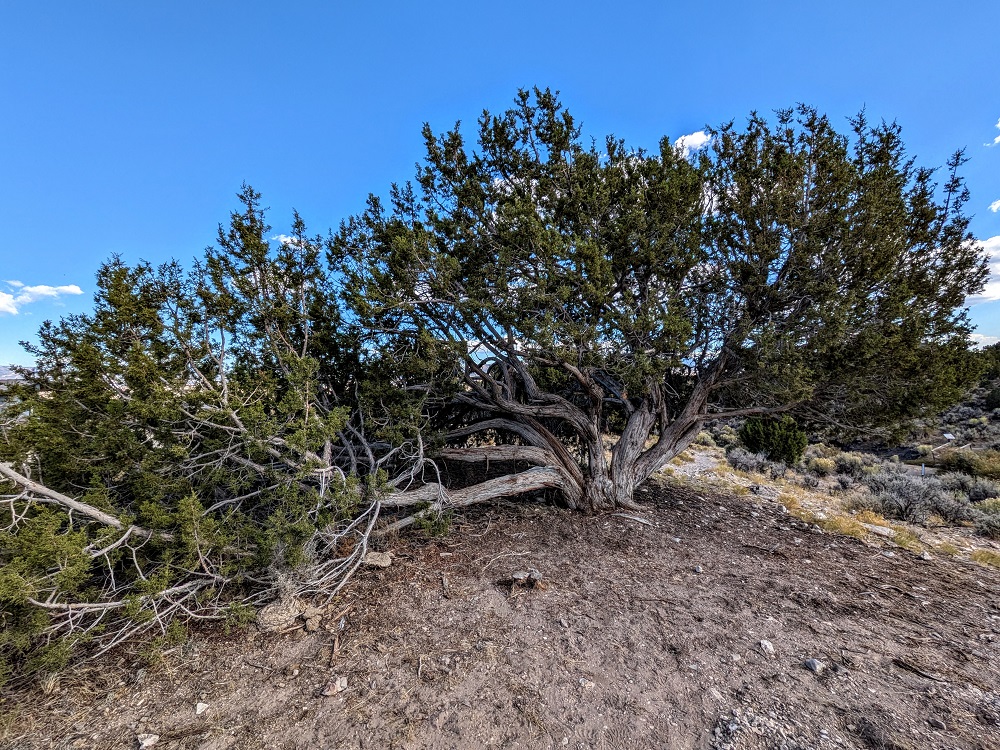
After finishing our lunch, we walked the last section of the Willow Creek Trail. Along that part there was an information board pointing out the former location of the town of Ward in the distance.
Ward once had a population of 1,500 people who produced almost $1 million worth of silver, lead and copper ores during the town’s short lifespan – that’s about $25 million in today’s money. The silver boom only lasted a few years though; once that ended and the post office closed in 1888, the town died.
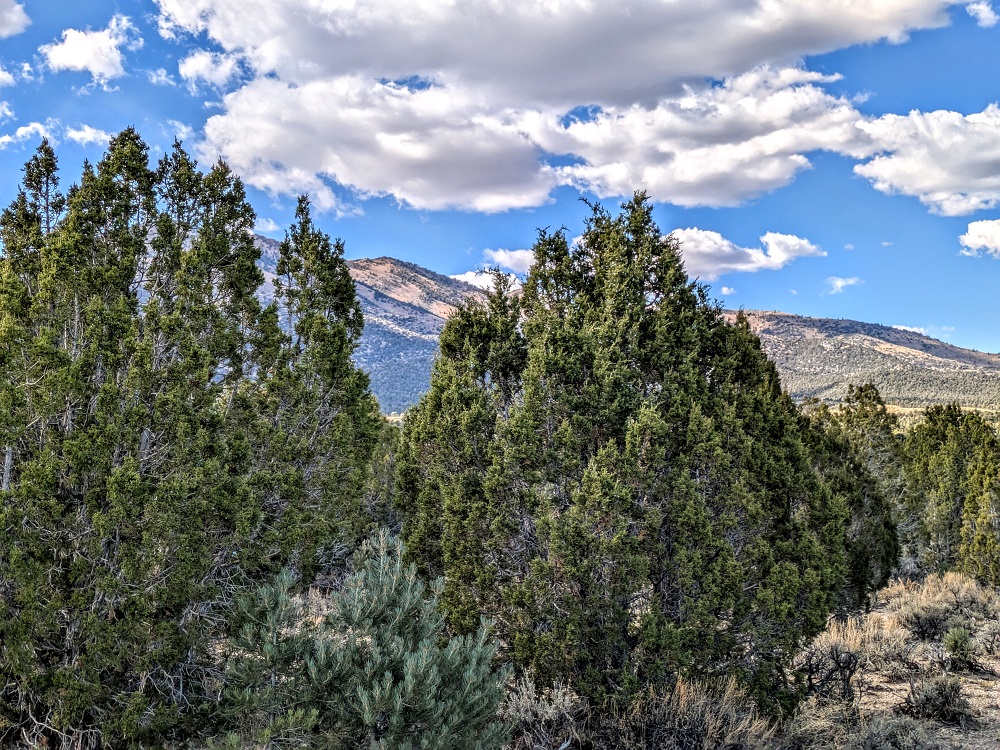
As you come towards the end of the trail, you’ll once again see the six beehive-shaped charcoal ovens.
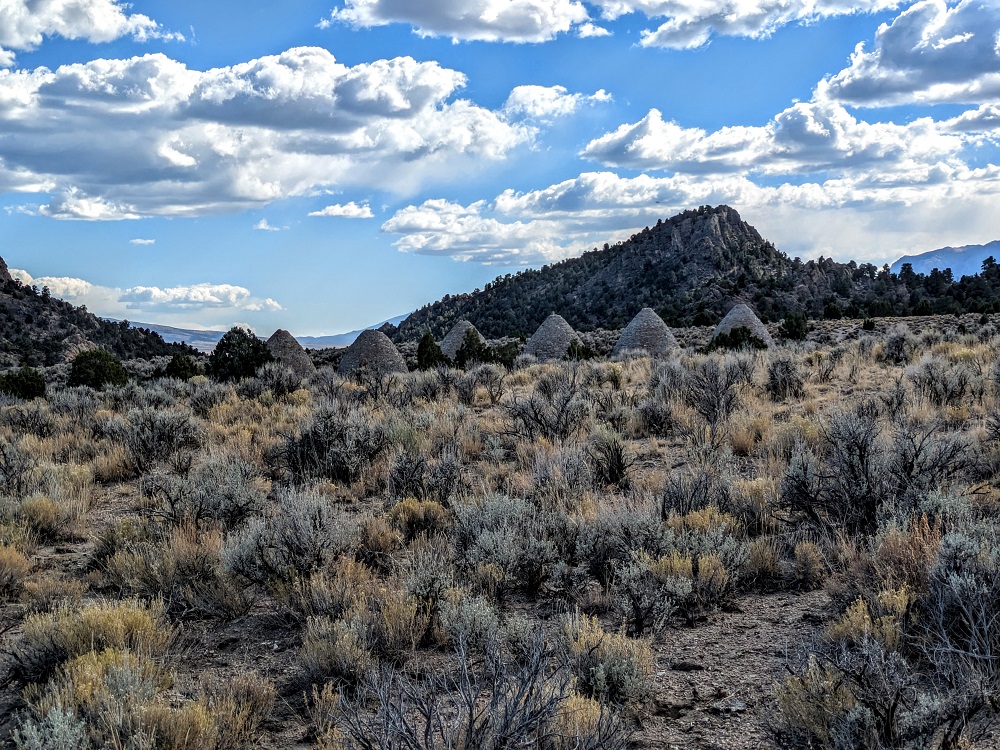
The condition of the trail was good throughout for the most part, although depending on the recent weather conditions you might find some short sections a little damp. I’d put hiking boots on as I hadn’t been too sure what to expect, but I probably could’ve done it in my usual flip-flops.
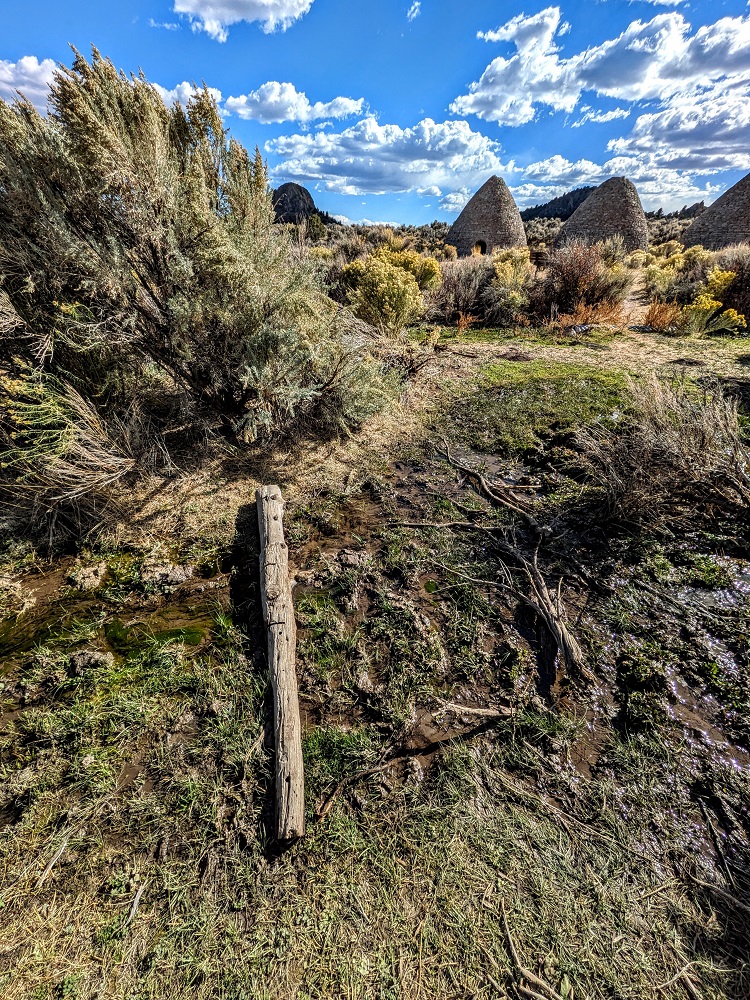
I ended up spending about an hour at Ward Charcoal Ovens State Historic Site exploring the ovens and walking the trail. It’s definitely worth a stop if you’re staying in Ely or are traveling to or from Reno along Route 50.

[…] It was a really interesting place to visit, especially seeing as it was a relatively short drive from Ely. You can read more about my visit to Ward Charcoal Ovens State Historic Park here. […]